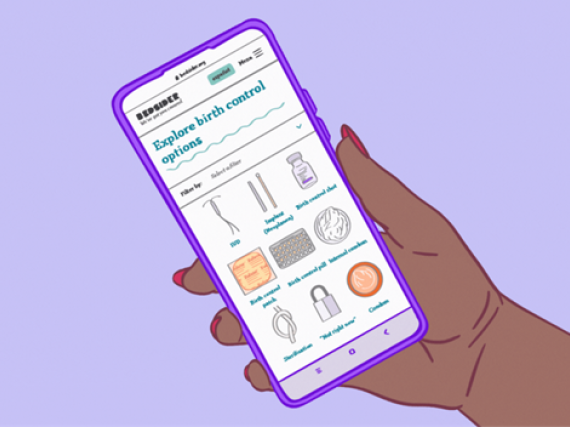The Intersection of Public Health and Contraceptive Access
Power to Decide proudly stands alongside organizations and communities nationwide celebrating National Public Health Week. It is a time to celebrate the countless contributions public health has made to the well-being of each and every individual, and to be steely eyed about the challenges that remain in making this nation healthier. Organized by the American Public Health Association, this year National Public Health Week highlights three areas where Power to Decide works to improve the lives of young people; healthy communities, rural health, and technology and public health.
Making Communities Healthier
Our work at Power to Decide provides the opportunity for young people to get informed, take control of their reproductive health, advocate for themselves, and protect the amazing life opportunities that lie ahead. But young people are not an island, and they cannot build their futures on their own. The communities we live in shape our health and well-being. Where we live matters as much as how we live.
Nearly nine in 10 American adults agree that birth control is a basic part of women’s health care and we know that when people have the ability to make decisions about their reproductive well-being, our communities benefit. Providing a system of support that enables young people to have the power to decide if, when, and under what circumstances to get pregnant and have a child not only benefits the young people themselves, but also leads to significant savings in publicly funded programs. These savings, along with improved maternal and infant health, as well as the prospect of increased economic and educational opportunities all stem from the ability to live an informed life and all make for healthier, happier communities.
Improving Rural Health
In 2010 (the most recent data available by county), the teen birth rate in rural counties was nearly one-third higher than in the rest of the country, and rates in rural areas have fallen more slowly than rates in non-rural ones. Our research (Sex in the (Non) City) shows that this is directly related to the fact that teens in rural areas are more likely to have had sex and less likely have used birth control than their city-dwelling peers. Compounding this problem, more than 19 million US women, many of whom live in rural areas, do not have reasonable access in their county to a public clinic that offers the full range of contraceptive methods. They live in what we call contraceptive deserts. For young people who want to avoid pregnancy, living in a contraceptive desert creates a significant roadblock on the path to opportunity.
These facts fit into a larger picture of the health of people who live in rural areas. They face a number of health disparities compared to those who live in urban areas; they’re more likely to have a higher burden of chronic disease, more likely to have limited access to primary care and prevention services, and more likely to face other social determinants of health such as poverty.
Connecting Technology and Public Health
Technology, and telemedicine in particular, is helping many Americans expand their access to care. Bedsider, our online birth control support network, welcomes nine million visitors annually and has been shown to help women avoid unintended pregnancies. When health care access is limited because of distance, finances, or any other reason, telemedicine services can help young people deal with some conditions and needs without leaving home. Which is why—as part of our Contraceptive Access Fund—we’ve partnered with telemedicine companies to ship a year’s worth of birth control to a woman’s door for just $40. Initially launching in the first half of 2019 in select areas across the nation, the Contraceptive Access Fund will offer women living at or up to 250 percent of the federal poverty level access to transportation offsets for clinic appointments, reimbursement for contraception cost, no or low-cost options to access birth control, and reimbursement for child care and unpaid time off to attend clinic appointments.
Because that’s what we’re committed to; no matter who they are or where they live—we want women to have the power to decide if, when, and under what circumstances to get pregnant and have a child by providing accessible information about birth control and lowering the barriers they face in getting the contraceptives that will work best for them.



